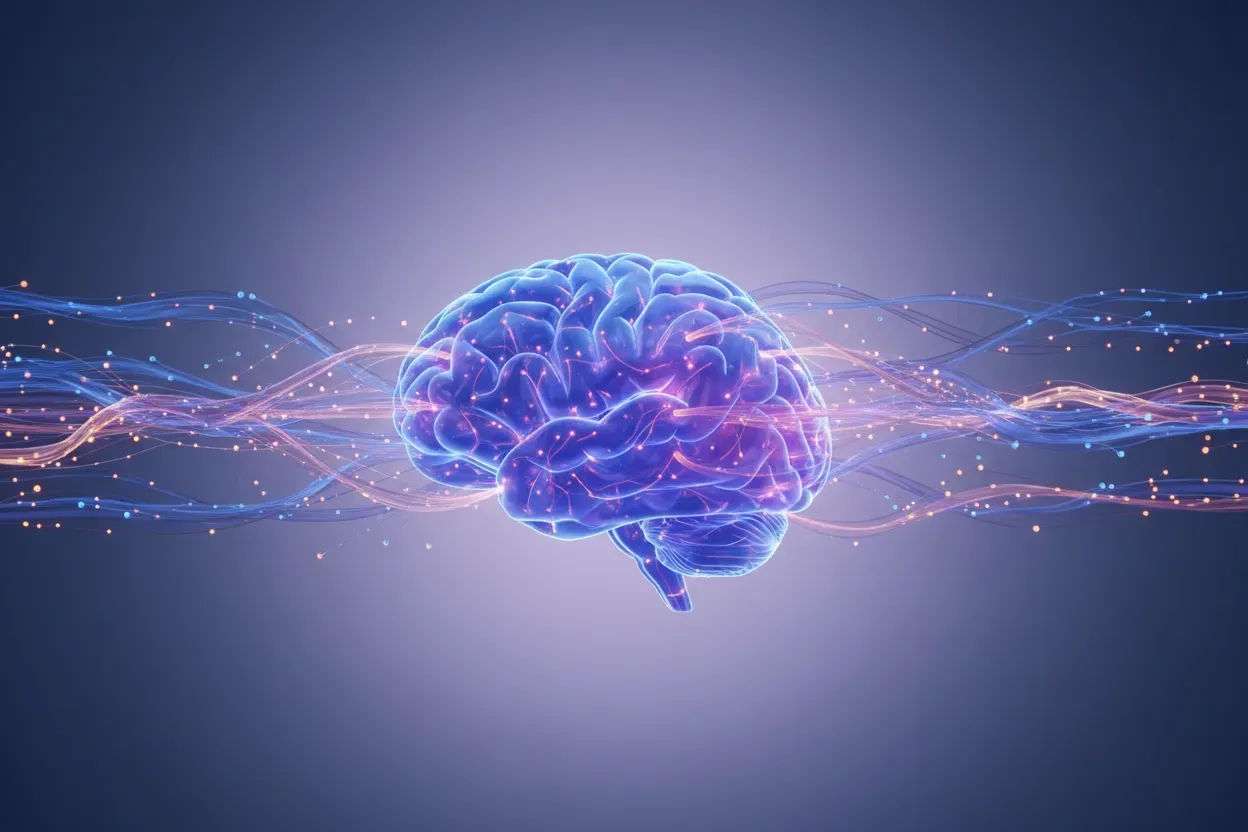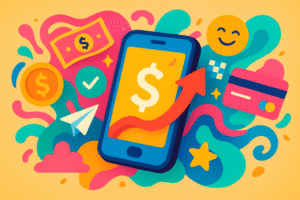Social media algorithms shape what users see, influencing emotions, perceptions, and mental well-being in ways that often go unnoticed. This article examines how these automated systems can amplify biases, distort reality, and disrupt emotional regulation, drawing on insights from experts in the field. Understanding these mechanisms is the first step toward regaining control over digital consumption and protecting mental health.
- Algorithms Fracture Reality Through Amplified Biases
- Experience Blockers Short-Circuit Essential Life Skills
- Algorithms Distort Identity and Reduce Empathy
- Build Digital Boundaries to Preserve Emotional Regulation
- Demand Rigor, Curate Critically, Challenge Bubbles
- Perfection Illusions Create Unrealistic Expectations and Isolation
- Echo Chambers Amplify Anxiety and Distort Reality
- Algorithms Mirror Vulnerabilities, Not Health
- Awareness and Intentional Consumption Protect Well-Being
- Understand the System to Reclaim Your Control
- Algorithms Magnify Fleeting Insecurities Into Distorted Fears
- Practice Algorithm Hygiene and Create Digital Space
- Stimulation Mistaken for Meaning Distorts Perception
- Constant Activation Dysregulates Your Nervous System
- Create Informative Content to Reverse Algorithm Effects
- Algorithms Disrupt Sleep and Trap Echo Chambers
- Tailored Content Helps Yet Overwhelms Simultaneously
Algorithms Fracture Reality Through Amplified Biases
Social media algorithms damage mental health by amplifying our biases into destructive realities. They act not as passive mirrors but as relentless coaches. They identify a faint curiosity, perhaps a paused video or a shared post, and interpret it as a core identity. Their sole goal is engagement, achieved by feeding our reactions back to us in an increasingly extreme and isolating loop.
This process warps personal identity. A young woman exploring feminism may be steered into content that frames all men as adversaries. A man questioning modern dating norms can fall into a “red pill” spiral, where influencers confirm his disillusionment with rigid, misogynistic worldviews. Each user is given a hardened lens instead of a balanced debate.
The scale of our anxiety is also distorted. Humans are built to handle local stresses, but algorithms deliver every global crisis to our palms. Someone physically safe at home can become mentally consumed by a distant war through a curated Telegram feed, leading to a state of helpless dread. This globalized anxiety is paralyzing, offering no avenue for meaningful action while overshadowing local concerns.
The most severe consequence is when this digitally fueled emotion sparks real violence. In many Asian countries, algorithms amplified a primal fear of child theft into widespread panic. Innocent people were lynched by mobs acting on algorithmically spread rumors. Similarly, in India, legitimate concerns about rabies were weaponized into a viral narrative against stray dogs, leading to widespread cruelty. The algorithm did not create the initial fear, but it built a chorus of confirmation that turned fear into hatred and hatred into action.
The final psychological toll is a deep isolation. The constant dopamine from algorithmic validation makes the slow work of real human relationships seem unsatisfying. People retreat into online confines, only to find that when true despair hits, the curated digital world offers no real solace. Without genuine community support, they face their darkest moments alone.
In the end, these algorithms fracture our shared reality. They take our slight prejudices and forge them into hardened worldviews, conditioning us to inhabit ever smaller, more extreme versions of the world. This leaves us less able to connect with others, cope with life’s complexities, and distinguish a digitally constructed nightmare from the world we all physically share.

Experience Blockers Short-Circuit Essential Life Skills
As a therapist and mental health professional working with individuals across all ages for the past 30 years, I’ve witnessed firsthand how social media can quietly erode our emotional resilience. In “The Anxious Generation,” Jonathan Haidt highlights a critical shift: when the smartphone and algorithmic social media became central to daily life, especially for teens, rates of anxiety, depression, and self-harm began to climb.
These algorithms are designed with one goal: to hook our attention. And they’re incredibly effective. They serve up bite-sized dopamine hits, one scroll at a time, feeding us the most engaging, inspiring, or emotionally charged content. But here’s the catch: while we’re scrolling, we’re missing real life. The ordinary, unfiltered moments where joy, struggle, failure, and connection coexist. These moments, especially the hard ones, are the very spaces where we build emotional strength.
When we numb out with algorithm-driven feeds, we bypass the discomfort that helps us grow. We don’t get the reps we need to strengthen our “coping muscle.” As I often say in my work with clients: confidence and resilience are not downloaded; they’re developed, over time, through repeated experience with challenge and recovery.
Social media also distorts the process of achievement. We see the highlight reel — the finish line photo from the marathon. We don’t see the self-doubt, sore muscles, or early morning runs that preceded it. The algorithm hides the struggle and showcases the outcome, making success look effortless and unattainable. That missing context is what teaches us grit. I’ve always believed I’ve learned far more from failure than from success — but that’s not the story the algorithm tells.
Jonathan Haidt refers to these platforms as “experience blockers.” When we trade lived experience for curated consumption, we short-circuit the development of essential life skills like perseverance, self-regulation, and emotional flexibility. And when we compare ourselves to filtered versions of other people’s lives, especially without seeing their setbacks, we often end up feeling “less than.”
Resilience isn’t built in comfort; it’s built in motion and struggle. It’s built when we show up, fall down, and try again. To protect our mental health, especially in this digital age, we must be deliberate about putting the phone down and experiencing this messy, beautiful world. That’s where the good stuff lives and grit grows.

Algorithms Distort Identity and Reduce Empathy
As a clinical psychologist with extensive experience working with children, teens, and families, I’ve seen firsthand the powerful ways social media algorithms can shape emotional well-being. Unfortunately, many of these effects tend to be negative. Algorithms are designed to maximize engagement — often by prioritizing content that provokes strong emotional reactions, reinforces existing beliefs, or keeps users scrolling longer. While this may serve the goals of the platforms, it can have harmful psychological consequences for users.
For young people in particular, these algorithms can distort their developing sense of identity and belonging by creating echo chambers or idealized versions of reality. Exposure to highly curated or emotionally charged content can contribute to increased anxiety, depression, body image concerns, and social comparison. For both youth and adults, the algorithm’s tendency to amplify extreme viewpoints can also heighten polarization and reduce empathy, making it harder for individuals to tolerate differing opinions or engage in meaningful dialogue.
From a psychological standpoint, this shift undermines our natural capacity for curiosity, perspective-taking, and emotional regulation — all of which are essential for mental health and social connection. Instead of fostering reflection and authentic engagement, algorithm-driven content often rewards impulsive responses and surface-level interactions.
While social media itself is not inherently harmful, the way content is filtered and delivered through algorithms can significantly influence users’ mental states and worldviews. Greater awareness, digital literacy, and intentional use of these platforms are critical steps toward mitigating these effects and promoting healthier online experiences.

Build Digital Boundaries to Preserve Emotional Regulation
Social media algorithms don’t just influence what we see — they influence how we feel and how we relate to ourselves and others. As a psychotherapist, I see the impact most clearly in the way algorithm-driven content quietly shapes our internal landscape.
Algorithms are designed to keep us emotionally activated. They elevate posts that provoke strong reactions such as outrage, urgency, comparison, fear — because those emotions keep us scrolling. When people spend long stretches of time in that heightened state, the nervous system starts to treat the digital world as a constant source of threat or competition. This can erode our capacity for calm, curiosity, and connection.
The curated nature of the feed also creates an illusion of consensus: “Everyone is achieving more than I am,” “Everyone else is coping better,” or “Everyone thinks this way.” Instead of encountering a balanced range of perspectives, we’re offered a mirror that reflects and reinforces our most vulnerable moments: perfectionism, self-doubt, or the pressure to be constantly productive.
Another subtle effect is boundary erosion. Because the feed is endless, there is no natural moment to pause. Without intentional limits, people end up living in a low-grade state of distraction, which disrupts sleep, concentration, emotional availability, and even the ability to fully experience joy. When every spare moment becomes an opportunity to check in, our minds lose the spaces of quiet that are essential for reflection and regulation.
I often encourage clients to build intentional “digital boundaries” not as a punishment, but as an act of self-preservation. Brief, structured periods of digital rest — screen-free mornings, intentional breaks during the workday, or device-free evenings — give the brain time to reset and return to a more regulated state. These moments of pause help people reconnect with themselves, their relationships, and the parts of life that algorithms can’t reflect: meaning, purpose, and genuine connection.

Demand Rigor, Curate Critically, Challenge Bubbles
Let’s be real: algorithms are the ultimate butlers. They see you linger on a puppy video? Your feed, sir. You chuckle at a sarcastic political meme? Right this way, madam. They’re scarily good at their job, which is fundamentally to keep us engaged. And while that’s fantastic for entertainment, it’s a potential nightmare for our minds and our society.
Algorithms have become master curators of our comfort bubble. It’s a cozy place! It’s filled with affirming opinions, familiar humor, and content that validates our worldview. It’s the psychological equivalent of a weighted blanket and a cup of tea.
The problem arises when this same “bubble-up” mechanism is applied to everything else, especially news and educational information. There is a massive difference between what entertains us and what educates us, and the algorithm struggles to tell the difference.
The result? We’ve become incredibly fractured. We’re not learning outside of our own bubbles, even though we’re living in a time when all of human knowledge is, quite literally, at our fingertips. The irony is so thick you could cut it with a spork.
Living in a perfectly curated bubble might feel safe, but it’s brittle. It’s time to demand more rigor, not just for the integrity of journalism, but for the well-being of our collective psyche.
For Platforms: Vet & Label. There should be a clearer, more rigorous differentiation in how content is categorized and served to users. A satirical meme is not news. A sponsored post is not an investigative report. Algorithms should be tuned to prioritize diversity of thought over mere engagement, especially for serious topics. Imagine a “Challenge Your Bubble” button that’s actually effective!
For Us, the Users: Curate & Consume Critically. We have to be the editors of our own minds. Actively follow people and sources you disagree with (but who argue in good faith). Seek out primary sources. Question why a piece of content is in your feed. Is it because it’s important, or because it’s provocative?
We need to move from a passive, algorithmically-driven consumption model to an active, intentional one. It’s about shifting from being an audience to being a participant in the information ecosystem. The goal isn’t to eliminate the fun, comforting content. It’s to build a healthier information diet where educational nutrients get as much algorithmic love as emotional junk food.
After all, a balanced diet is good for the body. Why wouldn’t it be good for the mind?

Perfection Illusions Create Unrealistic Expectations and Isolation
As a child and adult psychiatrist, I see the concerns surrounding social media use regularly in my practice. There are several ways algorithm-driven content consumption can impact our mental health. One major effect is the reinforcement of the status quo. The more we consume a certain type of content, the more similar content the algorithm feeds us, which makes it increasingly difficult to break away from it. Therefore, we cannot break away from the contents we consume, hence making us more trapped in a bubble we have created for ourselves.
Another issue is the creation of unrealistic expectations. Social media often presents an illusion of perfection, where nothing is truly real. My patients end up comparing themselves to an idealized version of reality, believing it to be ordinary life. Since these platforms thrive on engagement and views, the most dramatic, exaggerated, or emotionally charged content tends to rise to the top. As a result, creators feel pressure to produce content that is increasingly sensational. Over time, constant exposure to this kind of content can distort our perception of normalcy. The truth is, most of life is about small, ordinary moments, not the extremism we see online. Unfortunately, this shift has also contributed to decreased face-to-face social interaction and a growing sense of alienation. In many ways, social media has become a paradox: it connects us more than ever yet leaves us feeling more isolated and alienated than before.

Echo Chambers Amplify Anxiety and Distort Reality
Social media algorithms play a powerful role in shaping not only what we see, but also how we feel. These systems are designed to keep users engaged for as long as possible by prioritizing the content that evokes strong emotional reactions, which can often be outrage, fear, or fascination. When someone interacts with anxiety-provoking or fear-based content, the algorithm interprets that as interest and begins feeding them more of the same. Over time, this can create an echo chamber of distressing, sensationalized, or misleading information that amplifies anxiety and distorts one’s perception of reality.
This becomes especially worrisome in the context of misinformation and disinformation. False or exaggerated posts spread quickly when they evoke emotional responses, and the algorithm rewards those reactions by pushing similar content to wider audiences. As a result, users can find themselves repeatedly exposed to alarming, inaccurate, or fear-mongering narratives, which often come in the form of health content, safety, or social issues, which can reinforce a constant state of hypervigilance and mistrust.
As a clinical therapist, I can see this pattern often heightening symptoms of anxiety and contributing to excessive worrying and hopelessness about the world, and making it difficult to regulate one’s emotions after consuming media.

Algorithms Mirror Vulnerabilities, Not Health
Social media algorithms were designed to understand human behavior — but over time, they’ve started shaping it. After decades of treating people with anxiety, depression, and addiction, I’ve seen a clear pattern: when an algorithm learns your vulnerabilities, it often mirrors them back to you.
It shows you what keeps you engaged, not what keeps you healthy.
For someone feeling lonely, it shows more isolation.
For someone feeling insecure, it shows more perfection.
For someone feeling low, it shows endless distraction.
Quietly, this shapes how people see themselves. Many begin comparing their real struggles to everyone else’s highlight reel, and that subtle erosion of self-worth is one of the most common wounds I see in my clinical work.
The danger isn’t the content alone — it’s how silently it reshapes our emotional world.
When self-esteem depends on likes, validation, or constant stimulation, the mind becomes fragile. Anxiety rises, sleep suffers, and emotional resilience fades.
Here is what I remind my patients:
Algorithms may guide what you see, but they cannot define who you are.
Your mind is not a feed. Your worth is not a metric.
With small steps — digital boundaries, meaningful interactions, and time spent in the real world — people begin to reconnect with what algorithms can’t touch: authenticity, peace, and purpose.

Awareness and Intentional Consumption Protect Well-Being
Social media algorithms are designed to keep users engaged by showing them content that aligns with their interests, behaviors, and emotions. While this personalization can make online experiences more relevant, it can also have serious implications for mental health and overall well-being.
One major concern is the reinforcement of comparison and self-doubt. Algorithms tend to highlight posts that receive high engagement, often idealized lifestyles, appearances, or achievements. Constant exposure to such content can make users feel inadequate or dissatisfied with their own lives, fueling anxiety, low self-esteem, and body image issues.
Another effect is the creation of echo chambers. When users repeatedly see content that confirms their beliefs or emotions, it can distort their perception of reality and limit exposure to diverse perspectives. For individuals struggling with negativity or hopelessness, algorithms may continuously surface similar content, unintentionally deepening feelings of isolation or depression.
The addictive nature of algorithm-driven feeds also plays a role. The endless scroll and unpredictable rewards (likes, comments, new content) trigger dopamine responses in the brain, similar to gambling. Over time, this can lead to compulsive use, disrupted sleep patterns, and difficulty focusing on real-world tasks or relationships.
However, it’s not all negative. When used responsibly, algorithms can also promote positive mental health by surfacing supportive communities, inspiring stories, and educational resources. The key lies in awareness and intentional consumption, setting screen time limits, curating feeds, and taking regular digital breaks.
In the end, algorithms shape how users see the world and themselves. Understanding this influence helps individuals take back control of their digital experiences, prioritize authentic connections, and protect their mental well-being in an increasingly algorithm-driven environment.

Understand the System to Reclaim Your Control
As someone who works in digital marketing every day, I see how social media algorithms shape what you pay attention to. They help brands target the right people at the right moment. They also distort how you see the world. As a parent and someone who values critical thinking, I worry about the psychological effect this creates.
Algorithms focus on whatever keeps you on the platform. They act as hoarders of attention. They push content that triggers emotion, not content that helps you grow. Outrage performs well. Moral panic performs well. Tribal identity and conspiratorial thinking perform well. Even polished perfection performs well. Over time, this shifts your sense of what feels normal or true. You do not need coordinated misinformation campaigns when the system amplifies the loudest reactions on its own.
From a mental health point of view, two problems stand out. Your worldview starts to shrink. You are shown more of what made you react yesterday, even if it made you angry or insecure. Your sense of social comparison also becomes distorted. You believe you are seeing everyone, when in reality you are seeing a narrow slice that mirrors the behaviors the system predicts you will engage with.
I see this pattern play out in marketing data. Content that makes people feel inadequate often outperforms helpful content. Posts that aim for connection are pushed down the feed because they do not trigger strong reactions. The system rewards emotion over accuracy. This gives misinformation an easy route to spread without anyone needing to push it.
My concern is that this shapes public thinking in a way most people never notice. It influences beliefs, habits, and moods at a scale that feels invisible. For younger users or people already struggling with their mental health, this pressure can be damaging.
You can still navigate these platforms with intention. When you understand how the system works, you can create distance between what you see and what you believe. That awareness gives you back a sense of control in a space that often feels designed to take it away.

Algorithms Magnify Fleeting Insecurities Into Distorted Fears
Social media algorithms are designed to build a distorted reality for you to live in, and they are ruthlessly effective.
They are not built to help you, connect you, or make you happy. They are built to capture and hold your attention. To do this, they track every millisecond you pause on a video or image. The algorithm doesn’t know why you paused — it doesn’t know if it’s curiosity, envy, or self-criticism — it only knows the hook worked.
The psychological effect is that your feed becomes a funhouse mirror. It identifies a fleeting insecurity or interest and magnifies it, reflecting a distorted version of your own fears back at you. A momentary worry about your appearance can become a feed full of content that “confirms” your perceived flaws.
This process is incredibly isolating. It can make you feel like your specific anxiety is the biggest, most obvious thing in the world, when in reality, it was just one of thousands of passing thoughts the algorithm managed to trap.

Practice Algorithm Hygiene and Create Digital Space
As a psychiatrist, I often tell my patients that social media doesn’t just reflect our moods, but it also trains them. These social media apps quietly study and notice what we stop and like and then keep feeding us more of it. If you stop on sad news, you may see more sadness. If you pause on fitness content, your feed becomes a mirror of comparison. Over time, your mind may get used to staying in that emotional zone without even realizing it.
What’s interesting is that your brain treats these repeated feelings as if they are real-life experiences. The same parts of your brain that get activated when you eat your favorite food or get love and appreciation also light up when you get likes or comments online. Slowly, your brain starts craving this kind of stimulation, and it becomes harder to sit quietly or feel okay when things are calm.
I often tell my patients: it’s not screen time that hurts mental health, it’s the “emotional time” that we spend on screens. The key question is: how does your feed make you feel? Does it make you anxious, jealous, angry, or peaceful?
To protect your mental space, try what I call “algorithm hygiene.” Every few weeks, unfollow or mute accounts and pages that make you feel stressed. Instead, engage more with calming, positive, or educational content. This helps train the app to show you better things.
It’s also very helpful to have what I call “digital white space.” This means giving your mind 10 to 15 minutes each day with no phone, no news, no input, just quiet time. Even short breaks like this can reduce stress hormones and help you think more clearly.
In short, algorithms shape what we see, but awareness shapes how we feel. Once you understand that your feed is not reality but is just a reflection of what you interact with, you gain the power to make social media a tool for connection rather than comparison.

Stimulation Mistaken for Meaning Distorts Perception
Social media algorithms are designed to keep us engaged, not necessarily connected. They learn what keeps us up at night, what outrages, entertains, or validates our currently held positions, and feed that back to us until we start mistaking stimulation for meaning. Over time, this can quietly distort how we understand ourselves and others.
From a psychological and mental health standpoint, algorithm-driven content reinforces cognitive and emotional echo chambers. We stop encountering differences, and instead become hyper-attuned to what feels familiar or confirming. That can amplify anxiety, negative comparison, and loneliness.
The way forward isn’t abandoning social media altogether, but using it consciously. When we treat algorithms like tools rather than mirrors, we can reclaim agency over our attention, and with it, our mental well-being.

Constant Activation Dysregulates Your Nervous System
Social media algorithms are essentially designed to keep your nervous system in a state of activation because they exploit our threat-detection systems by showing content that triggers strong emotional reactions. This keeps us scrolling in a state of hypervigilance. From a trauma perspective, this constant exposure to distressing content (e.g., news) without resolution creates a chronic stress response in the body, dysregulating our nervous systems and making it harder to access states of calm and presence. The algorithms also fragment our attention and prevent the kind of sustained, embodied awareness that is necessary for genuine emotional processing and regulation. What concerns me most as a somatic and trauma therapist is how these media consumption patterns train our brains toward reactivity rather than reflection, making it increasingly difficult for people to simply be with themselves without external stimulation or to experience authentic human connection. In other words, we can’t be bored.

Create Informative Content to Reverse Algorithm Effects
I’ve been working as a social media marketer for various organizations for the past few years. As I understand, the algorithm isn’t inherently evil, but it is made to boost engagement, not personal well-being.
Here’s what I see happening. The algorithm tends to drive more clicks for content that is based on chaos and comparison. I’ve seen our own B2B content flourish when we lean into anxiety-driven content rather than posting about solutions without first highlighting the problems.
Social media makes the mind always be under the effect of FOMO and sets up a comparison filter. I view this as the hamster wheel effect. You open LinkedIn to find the next job opportunity or check on a company, but you quickly get consumed by content that promises quick hacks, great fixes, and talks about workplace chaos.
I’ve personally felt that consuming too much of this can negatively affect our mental health, as our brain is now quickly triggered by a glance at the chaos of social media. People start to compare themselves more after leaving social media, as far as I feel. It can be comparing your current job with a high-paying position at Microsoft, or just wondering when you can earn more to buy that new iPhone series.
What bothers me more is the growing lack of attention span and critical thinking in the masses. There’s a term called doomscrolling, which I have done myself at one point, and I had been tired of its futility.
In my work now, I try to reverse the algorithm effect. I always ask my team, “Can we create content that performs well but actually informs people rather than making them anxious?” It’s definitely a challenge, but we have eventually worked on it. The metrics are worse initially. But I think it’s the only ethical path forward.
I personally follow these steps to avoid social media impacting my mental health:
Unsubscribe and mark not interested in any brainrot content
Keep an automatic reminder on Instagram whenever I cross a certain threshold in content
Use a keypad phone while working, as it keeps me way less distracted
Not use my phone or my laptop 30 minutes before sleeping
Not check social media immediately after waking up
At times, I use an app to restrict access to social media

Algorithms Disrupt Sleep and Trap Echo Chambers
With a Ph.D. in Psychology, I help people achieve personal transformation through hypnotherapy and holistic practices. Social media algorithms are designed to keep you engaged for as long as possible, which isn’t great for your mental health.
They utilize incentives that make your brain crave more in order to keep you hooked. This may result in hours of screen time, which disrupts your sleep. Anxiety and depression can be worsened by sleep deprivation.
Algorithms push emotional content, ramping up stress and negative feelings. Comparing yourself to others online lowers self-esteem and body image.
Social media traps you in echo chambers, where you only see content that backs up your views, making worry and fear grow. Quick, short posts break your focus, making it harder to stay on task.
Notifications also keep the nervous system in a state of alert, preventing you from truly relaxing. This can be particularly detrimental for younger users because their brains are in a developmental stage and are establishing habits.

Tailored Content Helps Yet Overwhelms Simultaneously
Social media algorithms can have both helpful and harmful impacts on mental health. Tailoring users’ content to their interests improves efficiency for people to be able to access material relevant to their needs, which can provide tools, resources, and motivation to make changes that positively improve mental health. However, algorithms can also provide an overload of focused content areas. This can feel overwhelming and cause people to feel a range of ways such as hopeless, helpless, or anxious and keep people stuck in unhelpful patterns.









